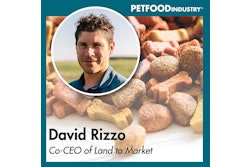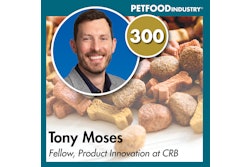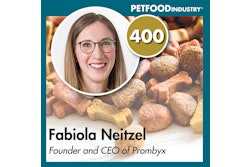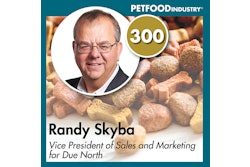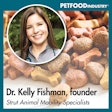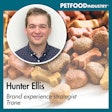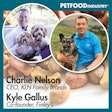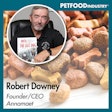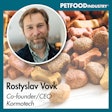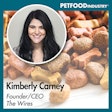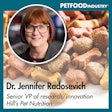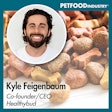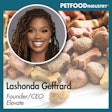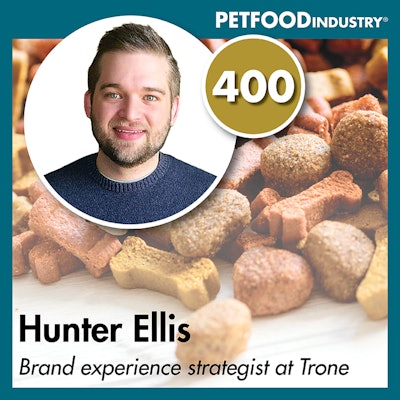
We're starting off 2023 strong with a discussion on how pet owners' purchasing habits have been affected by everything that's happened during the pandemic. Tune in to listen to Brand Experience Strategist at Trone Hunter Ellis discuss the results of a survey Trone did on current pet owner buying habits and where those habits are likely to head next.
The below transcript is from Episode 25 of the Trending: Pet Food podcast, where I spoke with Brand Experience Strategist of Trone Hunter Ellis about the results of a company survey focusing on pet owner purchasing behaviors during the pandemic. You can find the episode at www.PetfoodIndustry.com/trending-pet-food-podcast, on SoundCloud or on your favorite podcast platform. This episode originally aired on January 4, 2023.
(We want to thank AFB international for sponsoring this podcast. AFB is the premier supplier of palatants to pet food companies worldwide, offering off-the-shelf and custom solutions that make pet food, treats and supplements taste great.)
Lindsay Beaton – Editor, Petfood Industry magazine and Host, Trending: Pet Food podcast
Hello, and welcome to Trending: Pet Food, the industry podcast where we cover all the latest hot topics and trends in pet food. I'm your host and Editor of Petfood Industry magazine, Lindsay Beaton, and I'm here today with Hunter Ellis, brand experience strategist at Trone. Hi, Hunter, and welcome!
Hunter Ellis – Brand Experience Strategist, Trone
Hi, thanks for having me.
Beaton: In case you’re not familiar with Hunter or his experience, here’s what you need to know. With 10 years of strategic marketing experience, Hunter helps Trone strengthen its clients’ brand stories by researching cultural trends and conducting research to create authentic relevance. He has worked on the strategy and research for several pet and animal health companies including Zoetis (veterinary diagnostics), Sanicat (litter), Gimborn (treats), Exubrion (veterinary canine OA treatment) and Nutramax (supplements).
Headquartered in High Point, North Carolina, Trone is a marketing agency that specializes in creating experiences worthy of reexperiencing. For the past two decades, Trone has developed a specialization within the pet retail and animal health industries helping launch and revitalize numerous national and global brands across both channels. The agency’s services, including branding, website development, user experience, SEO, eCommerce, digital marketing and content marketing, work together to create online experiences that engage audiences and keep them coming back.
This experience, as well as Hunter’s involvement in a recent Trone survey focusing on pet owners’ pandemic-driven purchasing behaviors, makes Hunter the perfect person to answer today’s question: How has the pandemic of the last few years shifted pet owners’ buying habits?
So Hunter, I want to start off by giving our audience the background for this survey so we can set everything up for our conversation. What brought about the need for this survey, and how did you go about conducting it?
Ellis: The origin for this study — and I'll just refer to it as a pet nutrition shopper survey — the origins for this came out of a research study we were doing in 2018–2019, so just before the pandemic. This was for a client who was looking to launch their brand in the U.S. and was looking at competitive pet food/treats and trying to understand pricing strategies, but also how people thought about the category. And when we segmented the data, looking at the different competitors that they were interested in, we started to understand there were some really unique variances and how each of their competitors' audiences started to look at and think about the topic of nutrition and said, "We really should put together some sort of a survey that analyzes this a little more and tries to understand how is the landscape of pet nutrition? And how does that impact buying behaviors and influencers and just in general preferences around buying pet products?" Really it kind of came out of pre-pandemic, and then the pandemic kind of hit and there was a little bit of time there where we were just super focused on our own clients.
And then around 2021, we finally said it's time to do that survey. And so we launched the survey to a U.S. national sample of 466 pet parents, both cat and dog owners, including primarily baby boomers, millennials and Gen X. So that was the primary focus of the study. We launched the study in 2021 to try and understand the nutrition attitudes and perceptions and understand how that impacts the entire buying process. In summary, we sought to understand how diverse the national market was around the topic of pet nutrition, how much diversity there was, were there more than a couple of segments out there, and what are some implications that we could use for not only our clients but pet food and treat manufacturers nationally.
Beaton: I know that when you were compiling the results of the survey you ended up coming out with three pet owner nutrition segments that you saw emerging in the results of the study. Can you give a summary of those so that we know what we're talking about?
Ellis: So we conducted this survey, took 466 U.S. cat and dog owners, we wound up doing a multivariate analysis with our in-house statistician and he came up with four segments based on the number and variety of pet food products that they're buying — and that could include pet food, pet treats, veterinary prescription pet foods, supplements, probiotics — and also the level of agreement or disagreement with a battery of pet nutrition questions that we asked in the survey. So we had 24 different nutrition questions that we asked and wound up finding four segments. And then we looked at the data a little more, and there were only three that seemed viable and really engaged with the category in general. There was just an audience that they're buying pet food and they pretty much disagree with all pet nutrition-related questions in general, and don't seem to have much interest in changing that anytime soon. So we narrowed the field down to three and the three we wound up with, we've given cute little handles.
So we'll start off with the first audience, which is our Selective Loyalists. This audience is buying fewer products, so they're really focused on either a subscription pet food or the general pet food and maybe some non-functional pet treats. And that's really what they're buying. In general, their biggest pet nutrition belief is this notion that "I believe that pets with better nutrition have fewer health problems, and therefore lower vet bills." So it comes from nutrition as a way to long-term maintain their pets' health and possibly maybe lower vet bills in the future. And then lastly, the Selective Loyalists group blew us away — around half of that segment claims that they have not switched pet food brands in the past three-plus years, which is just crazy. We normally would see it be the opposite, 50% in the last year have switched pet food brands. So this group, they're not buying as many products but they're very, very loyal. And they're very much coming at it from a veterinary angle, of a long-term maintenance angle.
Our second segment is our Healthy Advocate. So our Healthy Advocates were purchasing the widest array of pet food and treat products, buying food, non-functional treats, functional treats, supplements, and then a minority were purchasing probiotics. And this audience, they are defined by this belief that "I care about my own nutrition and I'm looking for equally good options for my pet." So they see their pet as a reflection of their own health. And they're frequently looking to change pet food variety, just to introduce variety into their diet. This is a younger-skewing audience, there's more Gen X and millennials that make up and define this segment. But that's who they are.
And then finally, the most interesting, from my perspective, segment is our Hopeful Explorers. So this is an audience that is buying pet food, non-functional treats and functional treats, a minority are starting to buy supplements. And this audience is one that really resonated with this nutrition belief of "During the pandemic, I'm spending more time with my pet. And my pet has improved my outlook and my well-being." So they're coming at this nutrition thing from a perspective of, "Wow, I love my pet, my pet is really helping me get through the pandemic. And I really want my pet to stick around longer." So it's not that this audience just — poof — came out of nowhere. It's an audience that just by the circumstances of the pandemic wound up spending a lot more time with their pet. And so they are very unsure. They're a lot less competent than the other two segments about how to maintain their pet's weight and their diet. But they are really eager to learn fast. And this audience is about 16% of our total sample; they're the smallest of our three segments. But in my opinion that's still almost potentially a fifth of pet parents out there that are really locked in and interested in pet nutrition as of the pandemic, which is exciting.
Beaton: We're going to dive into the Hopeful Explorers and a little bit, but I want to talk more about the overall results. First, when you go into research and you go into surveys, you try not to have too many expectations, because that can cause the questions to end up being leading. And you really want to be able to get the data and then analyze and then draw your conclusions. But were there any surprises as you were compiling the data? Did things shake out the way that it seemed like they would? Or was there anything that really caught your eye as you were compiling the data and the results?
Ellis: So again, we launched this study in 2021, so we were already deep into the pandemic. And we had a number of questions in there that were pandemic-related. We asked questions about, have you had to switch brands or variety of pet food just because you couldn't find your pet food on store shelves? And I was a little surprised that the numbers weren't as high, given my experience with the pandemic and trying to find cat food in general was a challenge there for a while. I figured it would be higher, but it seems that it wasn't as bad as I expected. I also expected there to be a larger percentage of all three audiences who have adopted a pet, just given the national trend of around 2 million pets being adopted during the pandemic. I expected there to be a larger percentage maybe of Hopeful Explorers to be net new pet parents, and that just was not really the case. All three of these are pet parents that have existed long before the pandemic, and so that was interesting to me.
I think overall, the data story here is there are these three really distinctly different audiences that are approaching nutrition from different product angles, and their buying habits are very different. I think overall, I was very interested to understand that our Hopeful Explorers are doing a lot of purchasing online and subscribing to pet food given the fact that they're newer to this. But they're diving headfirst, they're subscribing, they're big proponents of fresh foods and direct-to-consumer models. They're just as likely to be engaged with that as that younger, Healthy Advocates audience, which was cool.
Beaton: I don't suppose there's any way to know for sure, but do you think that if you had done this survey three years ago, that the same three groups would have emerged in the same percentages?
Ellis: I don't think we would have found that Hopeful Explorer. I think the Hopeful Explorer, just, there'd be a larger percentage of the category unengaged. Currently we're looking at, according to our sample, about 30% or so make up that unengaged group. They're just not confident about pet nutrition, don't want help to become more efficient in their pet nutrition, and just are not looking to buy a wider range of things. So I think if we had launched this back in 2019, we probably wouldn't have uncovered this group that is 16% or more of the market, that is kind of new to this and has a lot lower loyalty level just because they're trying things, they're exploring, they're trying to figure out what works. So no, I don't think we would have found the Hopeful Explorer audience had we launched prior to the pandemic.
Beaton: So let's dive into the Hopeful Explorers and figure out what makes them tick. Because it sounds like the other two groups are a little more established, and you might attach different marketing strategies to them. They're either existing customers, especially the Loyalists, you are going to speak to them in a way different manner than you are to this Hopeful Explorers group, which seems to represent potential customers, not necessarily your current customer base. What does the Hopeful Explorer look like? If you were to create an avatar of a Hopeful Explorer, who are they?
Ellis: The Hopeful Explorer is a little older, they are definitely more of a baby boomer; this is an audience that has been a pet owner for at least five years. So they're not new to this, they've likely had a pet before. They actually are the largest of all of these three segments to be dog owners. So they're more likely to be dog owners than cat owners. And this audience may have been to their veterinarian in the past year, so it's not that they're not going to their veterinarian. But when asked how would their veterinarian rate their level of ability to control their pet's nutrition and manage their pet's nutrition through diet and exercise, over half are like, "I don't know. Not good or bad, just, I don't know." So there's very much a lower level of confidence with this group.
And when it comes to how pet nutrition plays a role, it's interesting because about 40% of the segment is buying supplements today. But when asked, "Do you believe nutritional supplements are beneficial for your pet, even if you're already feeding them the right pet food?" there's only like 10% or 12% that said, "Yes, I strongly agree" or "I agree with that statement." So there's a lot of the behavior that doesn't match the beliefs that's going on with this group, and so it is a lot of exploration. And it seems like they're just kind of in a transitional phase in a way. I almost liken them to, potentially they have a Healthy Advocates child or daughter or son-in-law, and they're influencing them to start focusing more on pet nutrition. So they're just new to this. They don't exactly know where to look or where to go to find out. But this audience has, from a household income perspective, the largest of the three so they've got money, they skew slightly older, they're more likely to have a dog, but they're lacking in that competence of what's the right mix of exercise and diet and food and supplements to help their pet have a happier, healthier life.
Beaton: Is this group more likely to go to their veterinarian as a primary source rather than pet food companies themselves?
Ellis: Right now the veterinarian is probably their top source of information as it is for all three segments, because that's just traditionally when you ask people who do you trust on that, their veterinarian or their veterinary team is going to rise to the top. For this audience in particular, what was interesting is just slightly under half said the product package labels themselves are a big influence for them, as well as ratings and reviews — about 30% or so said ratings or reviews are a big influence, or about 30% said just going into Google and searching for stuff. So you can tell there's some exploration going on. Pet retailer sites was almost as strong as Google, so just going to these pet food sites and browsing, I think, is a huge source of influence for this audience. And we already know they're open to subscription commerce and buying things online and getting them delivered to their doors or picking them up at the store. So those are all, to me, yes the vet is still a key influencer, but there's a number of other things: Online influencers like Google and pet food websites, or pet commerce websites that are influencing this audience to a lesser degree.
Beaton: It sounds like they're sort of everywhere, which can make it a little hard to pin them down in terms of customer education or targeted marketing or targeted branding. What are your recommendations for a strategy when it comes to that many potential avenues? Because obviously a company can't spread its marketing dollars too thin, and if they're really trying to get a hold of this particular group, or even a portion of this group, what do you think is their best bet in terms of actually catching their attention when they're so multi-channel in terms of their research?
Ellis: I think part of it is a message strategy. Like this audience is coming at pet nutrition, fundamentally, from a very personal, recent, emotional place. "I spent more time with my pet during the pandemic and I have noticed the impact they've had on me." So if your message is not aligned with that, and your message is more aligned with veterinary approved, vet recommended, that's going to have some impact but it may not as directly impact this audience. Part of it is this audience is doing a lot of searching; this audience is doing a lot of asking family and friends. I think there are, from a paid media perspective, there's opportunities for retargeting to reach this audience. So, recommending products based on their search and their purchase history. They're already online buying pet food products so we know they have a trail that follows them online; can we market to them after based on their product history and their purchase history, or after they left the Petco website and didn't fill their cart, is there an opportunity to engage them? Then those are opportunities that I see as ways to reach this audience. I think appealing to the fact that they need help, that they are looking for someone to help guide them a little bit more on how to better manage pet nutrition, they're reaching out and saying, please help me. The other two segments that's less the case; they already feel like they've gotten there.
Beaton: Do you feel like that then provides some opportunities for pet food companies that they might not have with the other two groups?
Ellis: I do. I do feel like there's some opportunity with this audience. And again, they're an older audience. So they may be more open to engagement than a younger audience. When it comes to education, I do think providing blogs or providing video content that speaks to this topic of pet nutrition are all going to go a long way to helping connect the brand with the actual direct impact it's going to have on their pet. One of my theories is that over time, and we would love to conduct a second wave of this study, to understand are the Hopeful Explorers growing? Are they shrinking? Are they going to stick around? As the pandemic continues to subside, do they start to behave like our other two segments? Or is this new reality of work from home and remote and hybrid work schedule going to create even more people who find their furry friends to be, you know, their favorite officemate and open their eyes to this really emotional belief system around pet nutrition and trying to improve their pet's health and well-being so that they get more years of time with their pet?
Beaton: I want to zoom out and take a look at the three groups together for a minute, because we've been talking a lot about the emotional connection and the opportunities there to speak to that connection between a pet owner and pets. A lot of the conversations in 2022 that I had with the industry surrounded the shrinking of the transactional relationship between a brand and a pet owner and an increase in the more message-driven relationship. Like pet owners and consumers in general really want to know the stories behind brands, they want to know what they're putting in their pantry and they want a why behind things. Even though you saw a really strong emotional connection with the Hopeful Explorer group, do you feel like overall — or did you see overall among the three groups a shift more towards wanting to know more about the brands and doing more research when it comes to nutrition-based things or message-driven brands and things like that? Was there sort of an overall shift in that direction, or was it really the Hopeful Explorers carrying that trend?
Ellis: I think that the Hopeful Explorers, and also our Healthy Advocates, are both coming at it from a very emotional perspective. I think Healthy Advocates come at it from a perspective of, "I'm obsessed with my own personal nutrition and I want the same for my pet, they are a reflection of me." I don't think our Hopeful Explorers are there yet, or they may never get there. But they're both coming at it from this very personal place. So the data overall would suggest that both of these segments definitely are having an interest in better understanding the brand that they're working with and bringing home to their pet. Maybe less so with the Selective Loyalists; you get the sense that that audience is very driven by what their veterinarian has to say and they have their regimen. And they seem very consistent in their behaviors, and it's really coming from a monetary standpoint of better nutrition equals lower vet bills down the road; that's more of a rational place. But I do think all three groups would benefit from having more direct connection to that nutrition attitude or the nutrition story and how it connects with pet food manufacturers' and pet treat manufacturers' brand stories.
I mean, everybody wants to understand. Especially as inflation continues to rise and shows no signs of stopping, it's going to be more of an onus on pet food manufacturers to justify why pet parents should continue to pay the price and not just switch to a cheaper or less nutritious brand, but to provide justification for why they should spend more money.
Beaton: And I know we've largely focused on the nutrition-driven groups, but I don't want to leave out the percentage of people who you found did not appear to be nutrition-driven. Was there any indication in your survey results what their driving factors were? Because they're still pet owners, they still obviously care about their animals. Where did they sit in terms of what influences their buying?
Ellis: So they are mostly driven by: Does the pet love the current food they're putting down? Does the pet gobble it up or graze, or however their pet consumes their food? It's a lot of the happiness that their pet is happy eating the food. It's kind of in there to some extent, that was their highest nutrition belief was just, "My pet loves their current pet food brand." That's kind of as deep as they go. They have that same level of low competence about how their veterinarian will look at them. And this was the one segment, even though it was 29% of the group, this is a segment that has not gone to the veterinarian overall in over a year. I think it was around two years on average was the last time they went. It's an audience that, they're not at the same level of annual care for their pet and focused on what's good for their pet or even want to be focused on that right now. It really kind of just comes down to they seem to be driven mostly by how well their pet consumes their main daily diet.
Beaton: Was there any sort of commonality among everybody you surveyed? Was there an overarching mood in terms of pet owners in the country?
Ellis: Hmm. That's a great question, Lindsay. I got the sense that — so we asked questions, again, this survey was conducted in 2021, that we were in the height of the pandemic to some regard. We had some questions about pre-, during and post-pandemic purchasing behavior. And what was interesting was to see during the pandemic, people projecting out what they thought their behaviors were going to be once things got more back to normal. And surprisingly, and I think this is relatively true of how things have played out over the past year as things have started to go back to normal, there was a lot of, "I expect to go back to in-store shopping in a big way," which was interesting to see all segments — 70% plus — saying like, "That's my expectation is I'm going to go back to the store," even though maybe curbside or online order and deliver to their doorstop were what they were experiencing during the pandemic, and were engaging with just this across-the-board notion that, "Yeah, we're gonna go back to normal. That's my expectation."
And like I said, we had some questions about, if you had to switch during the pandemic because you just could not find your brand, and you could not find the variety for your pet, are you likely to switch back after the pandemic? And what we found was, yeah, there's a lot of, "Once I can find it I'm switching" across the board. So I think both of those were maybe to be expected, but it's interesting seeing with hindsight now, the expectation that we're going to go back to normal and retail stores still have a strong place, they're not totally gone, in the pet parent's mind is where they want to go and explore and find in those new brands and new products that are hitting the shelves.
Beaton: I'm sure there are a lot of people listening to this who are very happy to hear that! Before we wrap things up I want to speak to pet food marketers. So let's say somebody on a marketing team is listening to this episode. They're trying to put together their brand strategy for 2023. What is a big, or a couple of big takeaways from this study that they can take to heart as they're putting together strategies for 2023 and what looks to be another fairly challenging year for everybody across the board in a lot of different ways? How can they set themselves up for success based on what you're seeing in the data you've collected?
Ellis: Each of these three shopper segments is a viable audience for brand marketers. That was why we decided it's not four segments, it's really three because those are the ones that a pet food manufacturer would want to commit marketing dollars towards. Each of these three is a viable audience based on their brand loyalty, based on their total commitment to exploring the category, their interest in the category and just engagement overall. I think each segment suggests a different set of shopping needs, influences and beliefs. And so what I take away is you can't have the same message for all three. Find the one that speaks to your product portfolio, find the one that best speaks to your brand story as it exists or relates today. If your brand story is really based on the freshest ingredients that even a human could consume or human-grade quality, maybe those Healthy Advocates are for you. If your story is really focused on lowering vet bills or vet-recommended, maybe the Selective Loyalists are for you. If you're looking to tap into an audience that's more newly engaged or freshly engaged with the category and your pet food is more related to a lifestyle brand or it's more related to helping extend the life of a pet, maybe the Hopeful Explorers audience is for you.
I think, ultimately, the big takeaway from all of this research is just the continued importance of understanding your customer journey and mapping that out to understand: What are all the different ways your customers interact with your brand online and offline? And where are new or exciting ways that we can engage them? Are there opportunities with paid media? Are there opportunities with organic media to bring in one or more of these audiences into that story? Because I honestly believe trying to get all three with the same message is not going to resonate. I think there's ways to craft your story and make it so it works tailored to each of these audiences.
But I do honestly think there's an opportunity for customer journey mapping in 2023. There's no time like the present to figure that out and figure out, what are the ways to improve your website? What are the ways to improve your e-commerce store experience? Or if you're engaged in subscription e-commerce, how do you bring in a new audience into the fold, particularly the Hopeful Explorer audience?
Beaton: I think those are all very important questions to figure out as you're coming up with your brand strategy for the coming year. And I really want to thank you for coming on today to talk a little bit about all of this. Consumer behavior is becoming more of a driving force than ever in terms of how the pet food industry operates, and it's also evolving into a multifaceted proposition. So I think it's good to point that out and say, it's okay to not go after everybody. Really hone in on who your customer and your consumer is and put together a message that speaks to who you really want as part of your brand. It's going to be really interesting to see what the new year brings.
Before we go, I want to do a little plug. Where can people find more information about you, about your research and about Trone?
Ellis: I'm Hunter Ellis. I am a brand experience strategist with Trone. We are based out of High Point-Greensboro, North Carolina, and you can find me on LinkedIn. And then I would recommend going to our website, our agency website www.trone.com. We will have a story up in our blog here in January about this article and about this survey. So if you have more interest, please feel free to reach out through our contact or a chatbot or just hit me up on LinkedIn. I'll be more than happy to get into the details.
Beaton: That is it for this episode of Trending: Pet Food. You can find us on www.PetfoodIndustry.com, SoundCloud or your favorite podcast platform. You can also follow us on Instagram @trendingpetfoodpodcast. And if you want to chat or have any feedback, I'd love to hear from you. Feel free to drop me an email: [email protected]. And of course, thanks again to our sponsor AFB International, the premier supplier of palatants to pet food companies worldwide offering off-the-shelf and custom solutions that make pet food, treats and supplements taste great. Once again, I'm Lindsay Beaton, your host and Editor of Petfood Industry magazine, and we'll talk to you next time. Thanks for tuning in!


